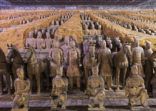Reports have often highlighted China’s slowing economy, which is often cited for a key reason for investor caution on Chinese equities.
“China’s GDP now is at 6%, which some of the publications have highlighted to be the slowest growth rate since 1992,” said Moffett, who manages the firm’s Asian Opportunities Equity Strategy, at a recent Hong Kong media briefing.
The slowing economic growth in China, however, is often coupled with the view that Chinese consumers are mostly buyers of luxury items, distorting the consumer consumption profile, he believes.
“Some Western commentators, when talking about China’s consumption, think about the people who are waiting outside the Louis Vuitton store in Paris to buy 25 handbags.”
Moffett disagrees, and he cited data from China’s National Bureau of Statistics that shows disposable income has continued to increase even as economic growth is edging down.

“What underpins what I think is the most important growth driver is household income. Part of this is because while China’s labour force is shrinking, it needs higher wages.”
The bulk of rising disposable income, however, is not going toward luxury product purchases, he said.
“These individuals and families who are getting higher wages are the typical Chinese consumers [and not the luxury shoppers], who previously had no college education, are paying a mortgage, who wants to own car, are raising children and have never bought an insurance policy, and they want all of that.
“They drive a lot of the earnings growth for a lot of stocks in China.”
40% weight
Given the rising income in China, Moffett is positive on Chinese equities.
The asset class represents a huge chunk of Moffett’s Asian Opportunities Equity Fund (only available for professional investors in Hong Kong and Singapore), accounting for 40.9% of its assets, compared to 30% in May, according to the fund factsheet.

Only a few Asia-Pacific (ex-Japan) funds have that huge of an allocation in Chinese equities. Out of the 182 Apac (ex-Japan) funds that are available to accredited investors in Singapore, only 27 products – 14.8% of the total – have at least 40% of its assets in Chinese equities, according to data from FE Fundinfo.
Moffett acknowledged that risks swirl around the asset class, especially the unpredictable direction of the US-China trade negotiations.
In terms of China A-shares, Moffett cautions investors about volatility, partly because the mainland-listed shares are largely driven by China’s retail investors. Around 5.42% of his fund’s assets are in China A-shares.
“It is a retail-driven market today and that is unlikely to change anytime soon,” he said, noting that only around 3% of the market is owned by foreign investors.
“However, for a number of more blue-chip type stocks that are transparent, have good balance sheets and have steady earnings growth, I think foreign ownership of these stocks are likely to rise more quickly.
“As foreign ownership of these stocks rises, they would behave more like the stocks in other markets that are more driven by fundamentals and less by retail flows. I expect that to happen in the next three years.”
Separately, Chinese regulators have also been encouraging domestic asset managers to launch more equity products, especially index mutual funds and ETFs, with the aim of institutionalising — bringing more stability — to the domestic stock market.
In terms of his investment approach, Moffett prefers stable companies over high growth businesses, he said in a previous interview this year with FSA.
“The sweet spot for me is to invest in the compounding companies that only grow around 15% a year, but can provide that growth rate year-after-year.”
The Asian Opportunities Fund versus its benchmark and sector in Singapore


















